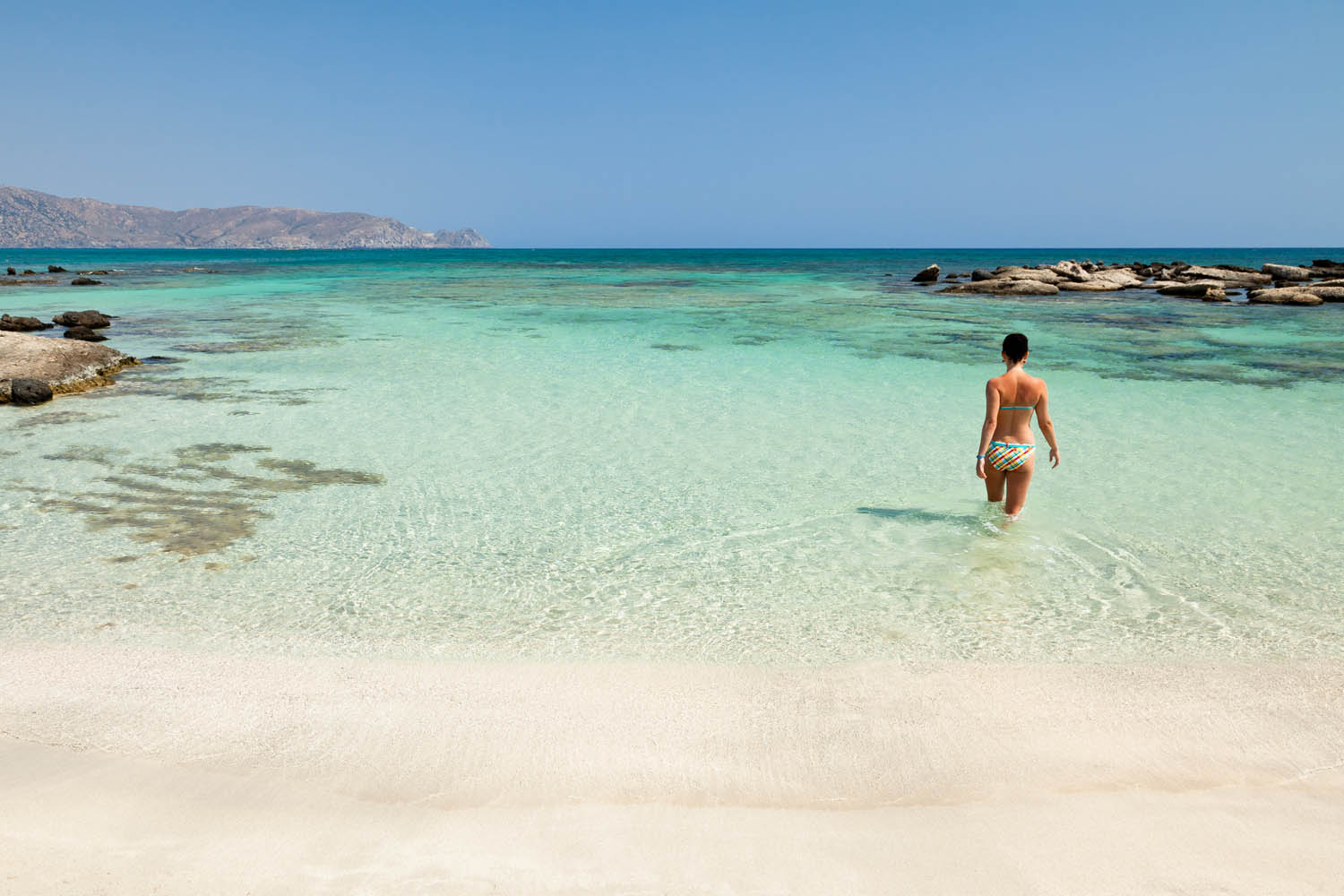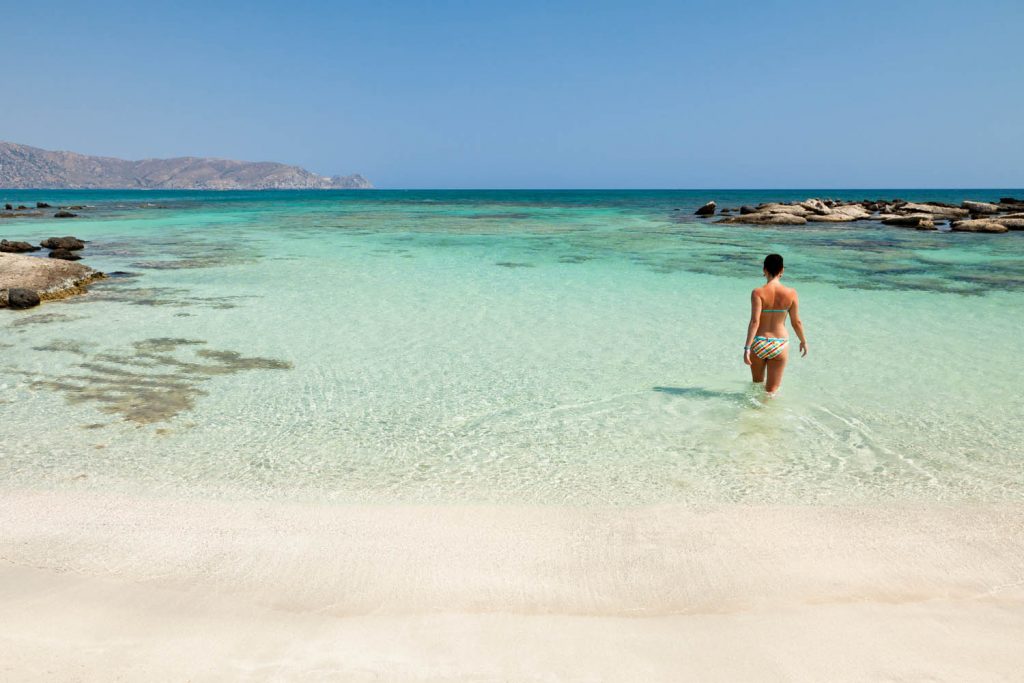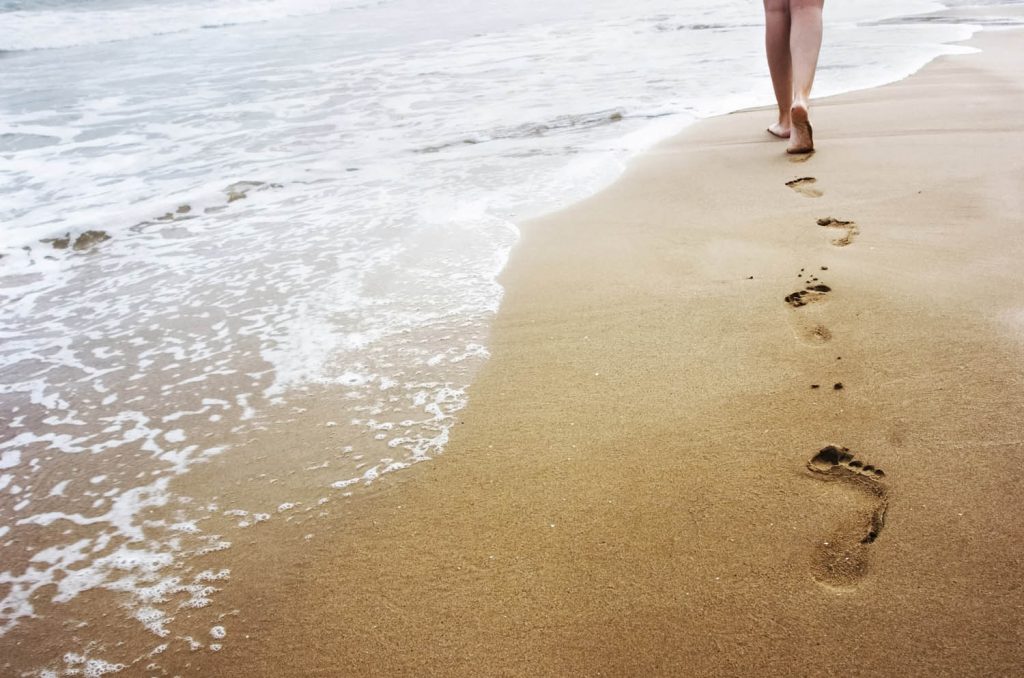Location
Location
Elafonisi combines a magnificent tropical beach, a picturesque islet in shallow water, and a unique, protected natural environment.
When you step into Elafonisi for the first time, it’s hard to believe that you are still in Crete, as the whole feeling of the place is that of a magical tropical island somewhere far from Europe. It is in a distance of about 75 kilometers southwest from Chania city.
The beach of Elafonisi is stunning: it has shallow, crystal-clear turquoise water, and fine white and pink sand. If we add to all these the gorgeous natural landscape, it is not a coincidence that Elafonisi beach has been repeatedly voted by visitors as one of the best beaches in the world!
On the other side of the beach, lies the Elafonisi islet. Although the distance from the beach to the islet is about 100 meters, you can easily get there on foot, as the sea forms a shallow lagoon between the beach and the islet, where the depth of the water is between a few centimeters up to one meter. This marvelous lagoon is a fantastic natural formation which is perfect for taking great pictures. The unique combination of beach, islet and lagoon makes the beach of Elafonisi actually change its shape from season to season, and from year to year!
The large beach of Elafonisi features some basic amenities, like sun beds and parasols, and canteens serving cold water, refreshments, drinks and snacks. If you want more seclusion, you can find a couple of nice, hidden coves on the south of the main beach.
Elafonisi: A unique natural environment in Europe
The impressive pink color of the sand in Elafonisi originates from the so-called Foraminifera shellfishes, which, when they complete their life cycle, leave behind their reddish shells which are crushed in the white sand and mix with it to produce this unique pink color.
The whole area of Elafonisi in general is very rich in rare species of flora and fauna, and this is the reason that it is an environmentally protected Natura 2000 area. Possibly the most fragile of these species, are the centuries-old cedar trees that very slowly grow on the sand year after year.
Regarding animal species, the area of Elafonisi is a natural refuge for many species of sea birds. It is also the last stop in Europe for many species of migratory birds in their long journey from Europe to Africa – and vice versa. The islet of Elafonisi is also a breeding place for the protected Caretta-Caretta sea turtle. In the sea around Elafonisi you can sometimes see Monachus-Monachus seals swimming, which are the characteristic protected seals of the Aegean Sea.
Due to the great environmental value of Elafonisi, you should be aware of the following basic rules to protect local nature:
– Taking sand is strictly forbidden.
– It is forbidden to injure the rare cedar trees, such as cutting part of their branches, as they grow up extremely slowly.
– Protect the sand lilies, which grow on the sand dunes. Elafonisi is one of the very few remaining beaches where you can still find them.
– Waste is prohibited.
Apart from a place of magnificent beauty, Elafonisi is also a place with rich history. The area of Elafonisi in ancient times was called Mousagores, because there used to be a sanctuary of Apollo Mousagetis on the islet. “Mousagetis” in ancient Greek means leader of the Muses, the deities who in ancient Greek mythology played their music to relax the gods and deities of the sea and calm the sea water. Centuries later, the Venetians started referring to the place on their maps as Elafonisi (meaning “Deer Island” in Greek), or “Scolio Lafonisi” in Latin, and this name has been preserved up to this day.


